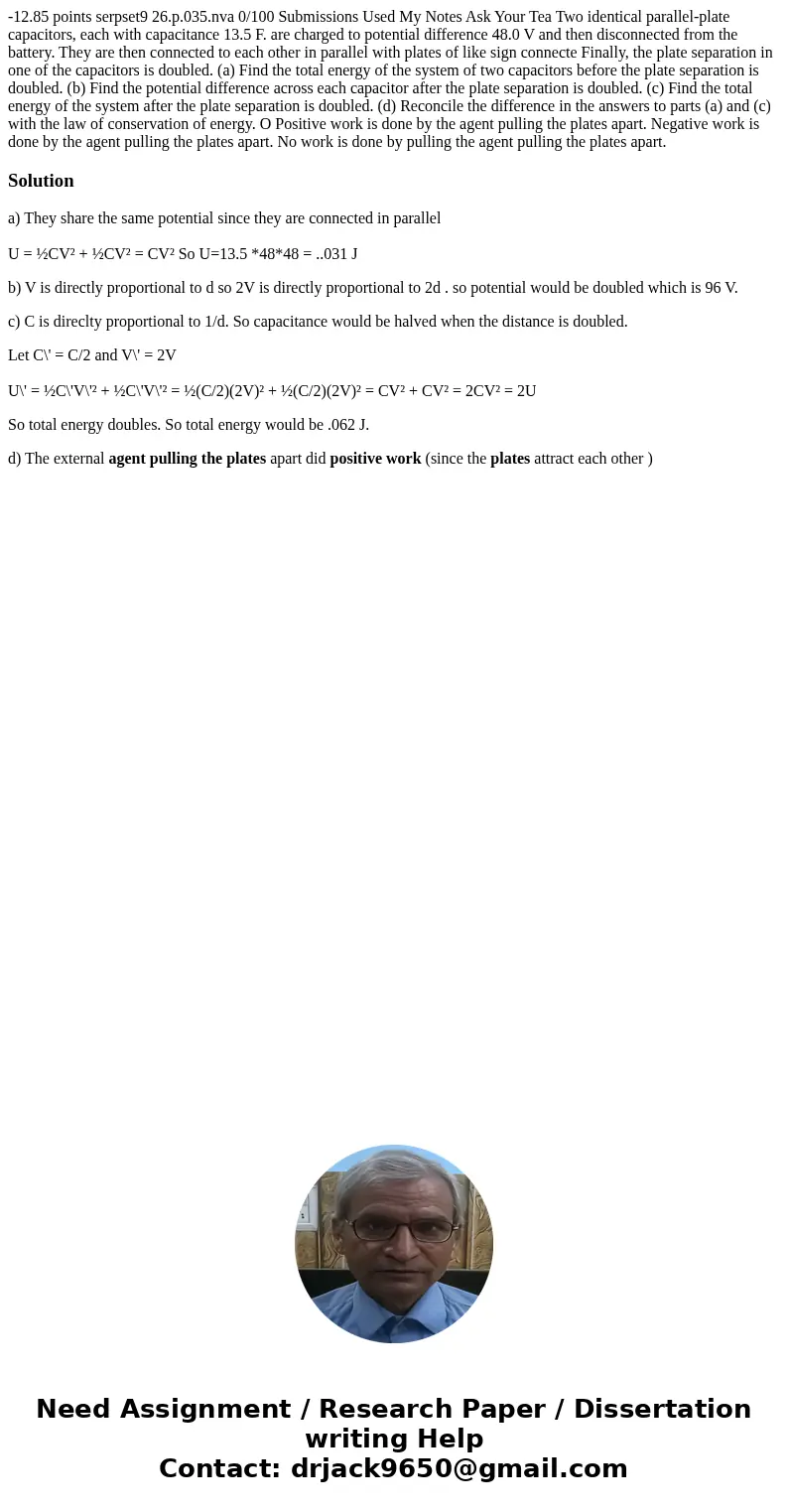1285 points serpset9 26p035nva 0100 Submissions Used My Note
-12.85 points serpset9 26.p.035.nva 0/100 Submissions Used My Notes Ask Your Tea Two identical parallel-plate capacitors, each with capacitance 13.5 F. are charged to potential difference 48.0 V and then disconnected from the battery. They are then connected to each other in parallel with plates of like sign connecte Finally, the plate separation in one of the capacitors is doubled. (a) Find the total energy of the system of two capacitors before the plate separation is doubled. (b) Find the potential difference across each capacitor after the plate separation is doubled. (c) Find the total energy of the system after the plate separation is doubled. (d) Reconcile the difference in the answers to parts (a) and (c) with the law of conservation of energy. O Positive work is done by the agent pulling the plates apart. Negative work is done by the agent pulling the plates apart. No work is done by pulling the agent pulling the plates apart. 
Solution
a) They share the same potential since they are connected in parallel
U = ½CV² + ½CV² = CV² So U=13.5 *48*48 = ..031 J
b) V is directly proportional to d so 2V is directly proportional to 2d . so potential would be doubled which is 96 V.
c) C is direclty proportional to 1/d. So capacitance would be halved when the distance is doubled.
Let C\' = C/2 and V\' = 2V
U\' = ½C\'V\'² + ½C\'V\'² = ½(C/2)(2V)² + ½(C/2)(2V)² = CV² + CV² = 2CV² = 2U
So total energy doubles. So total energy would be .062 J.
d) The external agent pulling the plates apart did positive work (since the plates attract each other )

 Homework Sourse
Homework Sourse